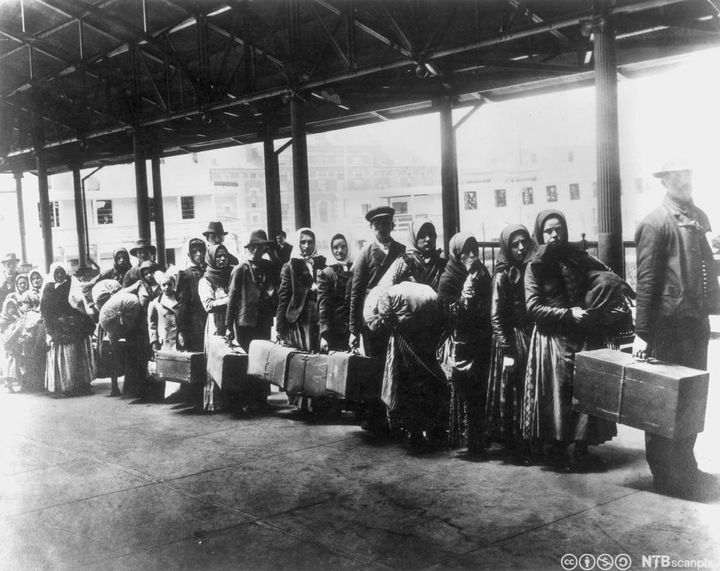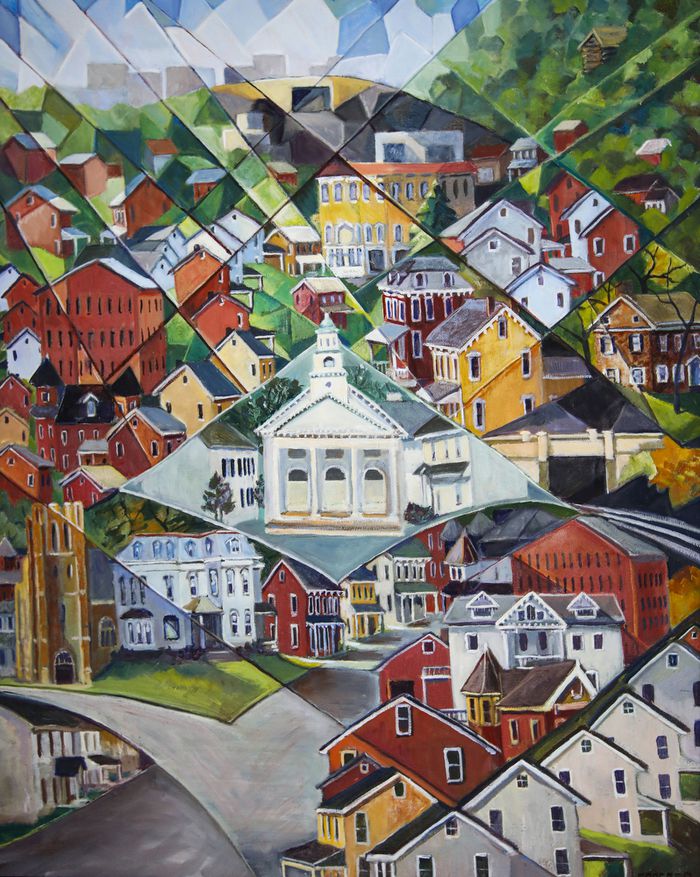"To be American is to be?" How Victoria Chang and Kaveh Akbar’s Poetry Attempt to Answer This

My grandparents immigrated to New York from Colombia in the late 50s. They did not want to move to a Hispanic neighborhood because they thought they wouldn’t be able to fully integrate if they stayed with people like them. They moved to Astoria, a predominantly Greek neighborhood. Upon their arrival, the Greeks called them dirty and thought they wouldn’t pay their rent. Though the Greek community soon realized these strangers weren’t that much different from themselves, and their fears were unwarranted.
My grandparents’ experiences of life in Colombia and the United States lives on through the stories my mom tells me like the one above. Similarly Victoria Chang, the daughter of immigrants, shares an insight on the complexities of finding one’s identity in America as an immigrant through poetry.
Chang’s fourth collection of poems, Barbie Chang, follows the character Barbie Chang. Instantly, the name Barbie conjures up images of a doll with blonde hair and a thin plastic figure. Though, Victoria Chang never calls her character just “Barbie,” she is always referred to as “Barbie Chang.” The first and last names have different connotations to them. “Barbie” has a certain image and expectation connected to it and is starkly American. In contrast to this, “Chang” is Asian. Putting them together, Victoria Chang creates an internal battle of the self, of identity, which her poems explore.
Barbie Chang feels like an outsider. She desires validation from the “Circle” (a group of school moms who are the “mean girls”) yet fears them. In the poem “Barbie Chang Got Her Hair Done,” she writes:
barrettes glowing like a rainbow that
seemed low enough
to reach to touch Barbie Chang would
never admit it but
she still wanted the rainbow to rain on
her to wear bows in her
hair that meant she belonged somewhere
else she owed it to
her children to make friends to blend
into the dead end
Barbie Chang wants to emulate the Circle. She feels pressured to play into the “Barbie” part of her name. Victoria Chang shows the struggles second and third-generation immigrants face with maneuvering social nuances. Barbie dissociates herself from her Asian culture to fit in, yet her efforts are never enough.
Unfortunately, the dependence on a certain appearance to fit in reminded me of what my mom told me after I read this poem to her. My grandparents had fairer skin and typically white features rather than the dark hair and brown skin often associated with Latinos. They blended in well because of this, until they spoke and their Colombian accent set them apart. My mom believes their European-leaning appearance made for an easier experience in the United States. To avoid discrimination, my mom and her little brother never dared to speak Spanish at school, only at home.
The poem above lacks punctuation. The lines are broken up in a way that requires the audience to reread the poem to catch the play on words. The style creates a feeling of unevenness like walking on bumpy ground. Barbie Chang struggles to find her true self and “walks” this unsteady path to get there.
The intentional unevenness and uncertainty of Chang’s style is similar to how Iranian poet, Kaveh Akbar, writes about his relationship with America in the long poem "The Palace."
The poem begins with a burning palace, yet the writer chooses to stay on his throne. Immediately, this lackadaisical attitude introduces Akbar’s views of America. Americans willingly ignore injustice and urgent issues that plague the country for the sake of comfort. They would rather let the palace collapse into ash around them than get uncomfortable to make changes.
Akbar states:
There are no good kings.
Only beautiful palaces.
Through personal anecdotes, Akbar explores the reality of life in America versus the ideas it promises. His father left Iran dreaming to be like Mick Jagger in the United States but ended up working on a duck farm for thirty years. He slept on a couch coughing up feathers. He hoped for fame but was hit with a harsh reality that the American dream is only available for certain people. Akbar ties in this imagery again with Mick Jagger sitting on a coach wearing an ostrich feather coat. Akbar says there aren’t any doors only king-sized holes. Not everyone can make it in America; opportunities are made for a certain kind of person.
The strongest line of this poem highlights xenophobia in America. Akbar writes:
At his elementary school in an American suburb,
a boy’s shirt says: “We Did It To Hiroshima, We Can Do It To Tehran!”
At his elementary school in an American suburb,
a boy’s shirt says: “We Did It To Hiroshima, We Can Do It To Tehran!”
The repetition emphasizes the shock and hatred these words hold- a child causally promoting horrible destruction. Despite this, Akbar’s pride in his culture is clear with his references to food and native languages.
Akbar depicts how America draws people in with a glittering promise of fame and glamour but also pushes them with a hateful spirit.
Akbar’s questions “Who can be American?” and “To be American is to be?” are akin to what Chang attempts to answer in her poetry.
Akbar is an immigrant to the United States and Chang is the daughter of immigrants. Akbar focuses on the limited opportunities for immigrants and minorities in America whereas Chang writes about the struggle to fit in as an immigrant. Though both bring light to minorities’ experiences in the United States.
Through my family’s experiences and the views of these poets, it is clear that there is not one American experience, look, or defining element. Each voice adds a mark onto a pointillist painting that is the American identity. It is a collection of differences that makes a whole picture. Now, it feels as if people try to isolate one dot on the painting and argue how it is different. Finally, I leave you thinking of Akbar’s question from The Palace: “To be American is to be?” and a reminder that the whole painting is a bunch of different dots.


